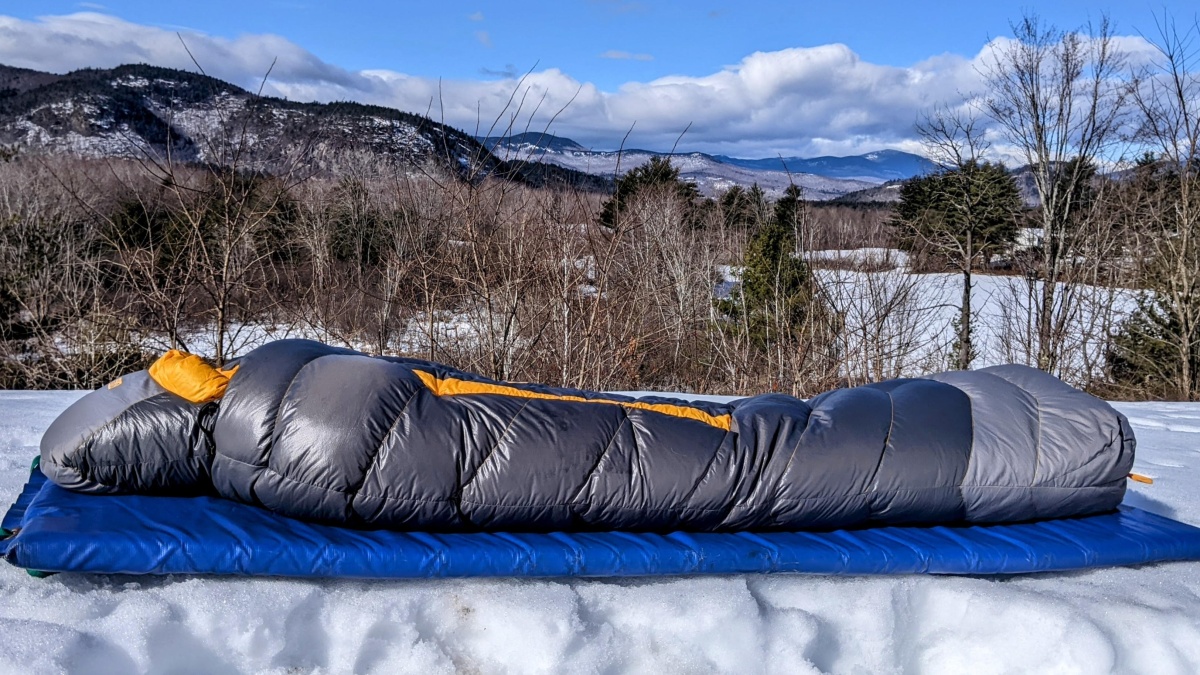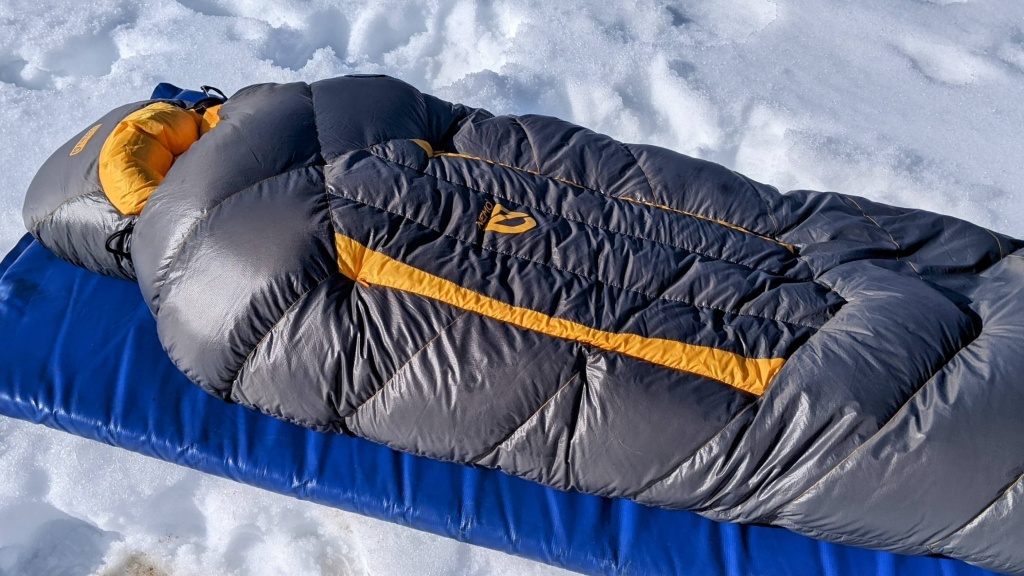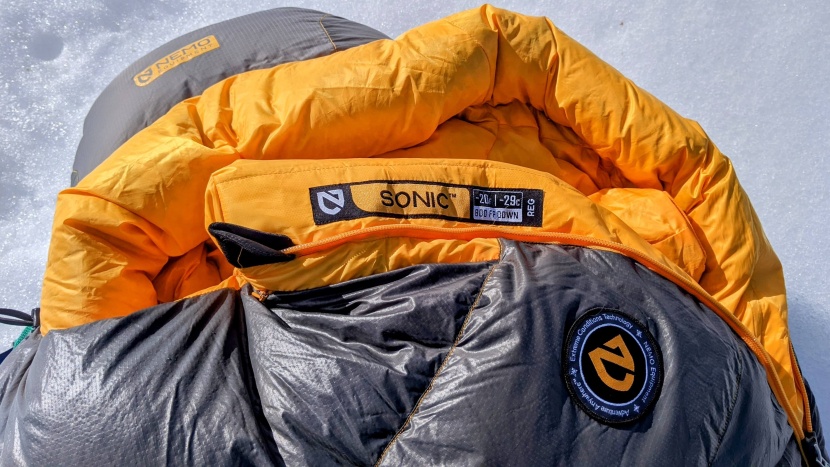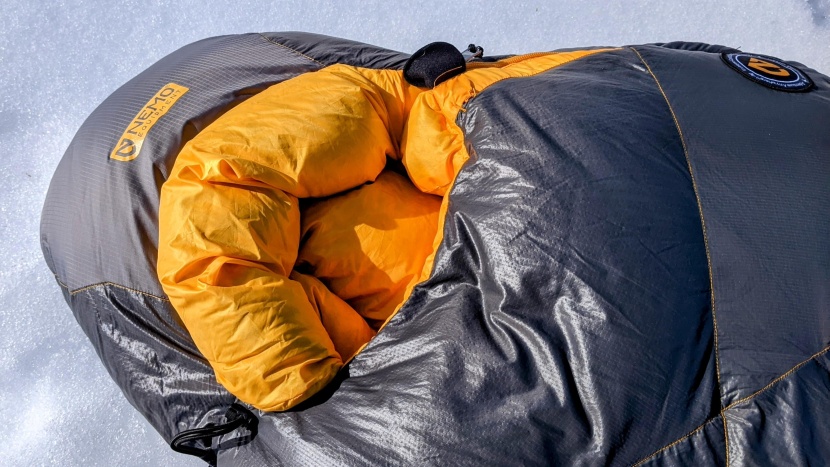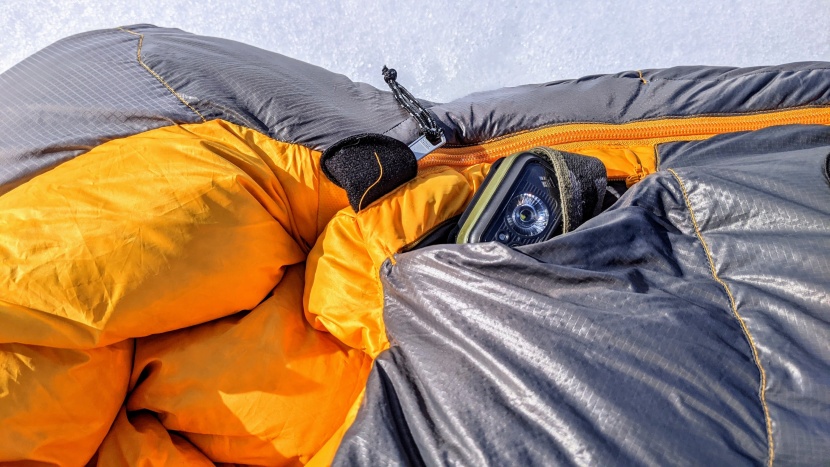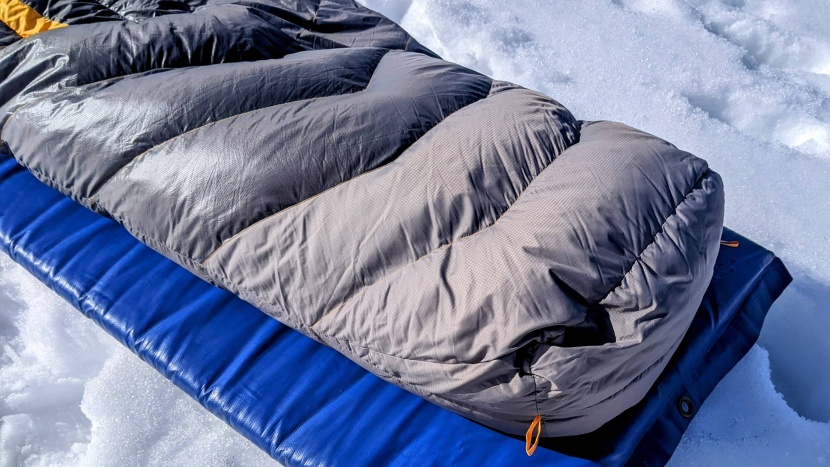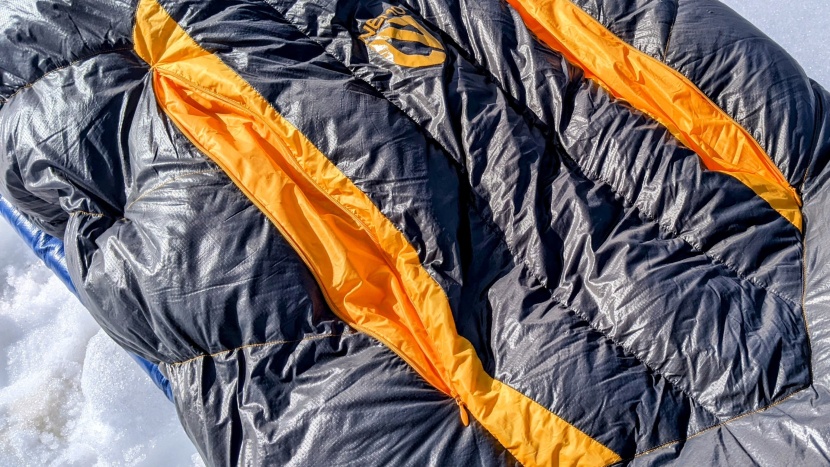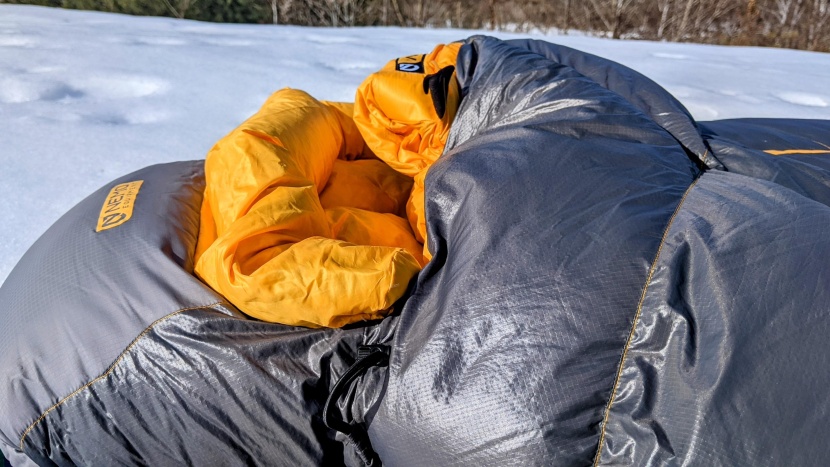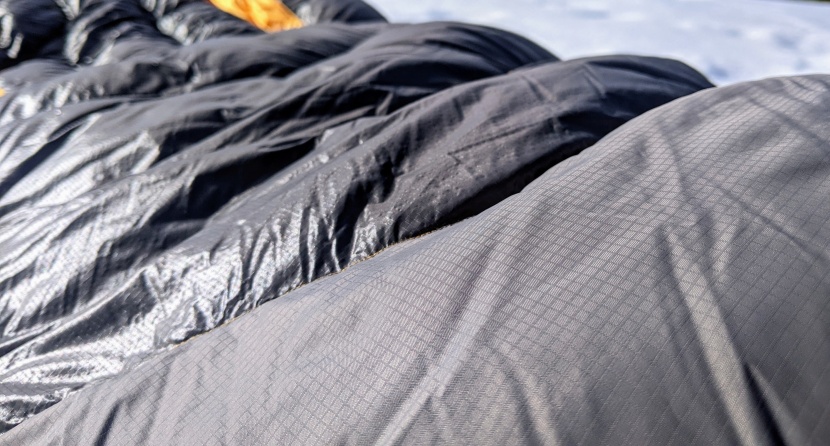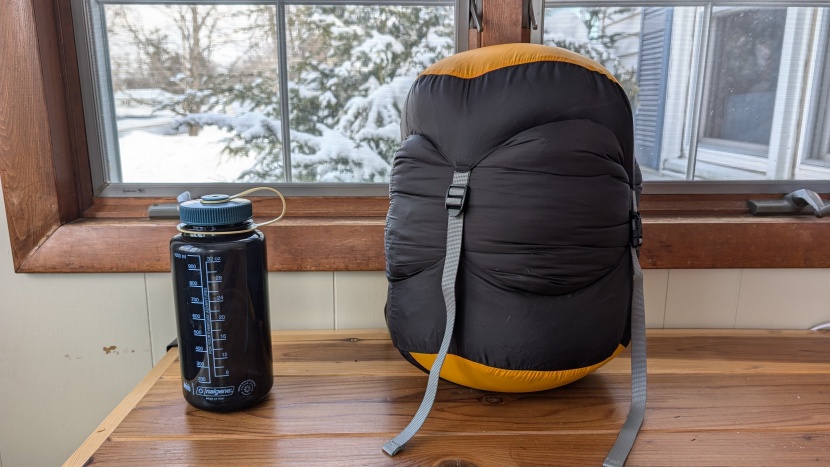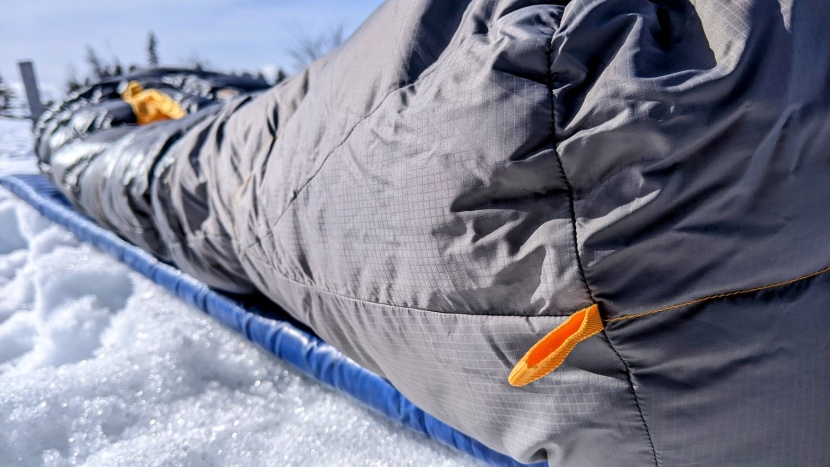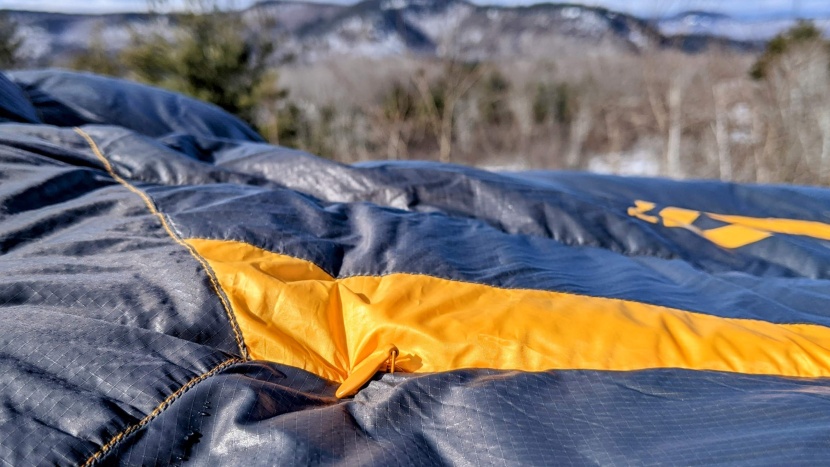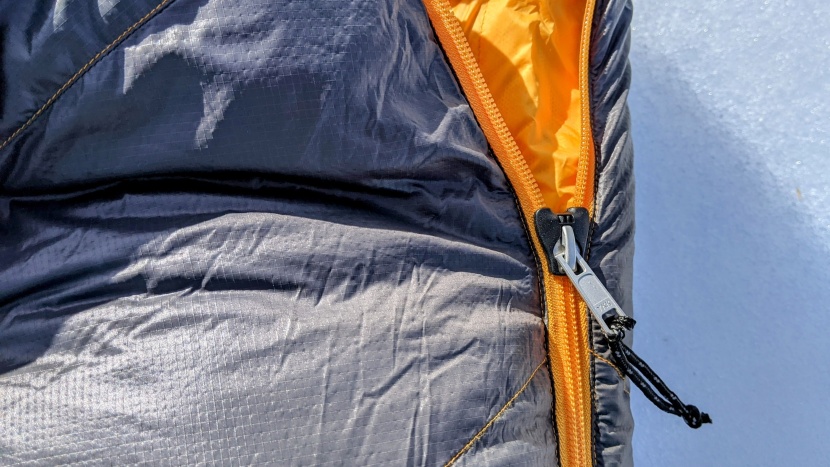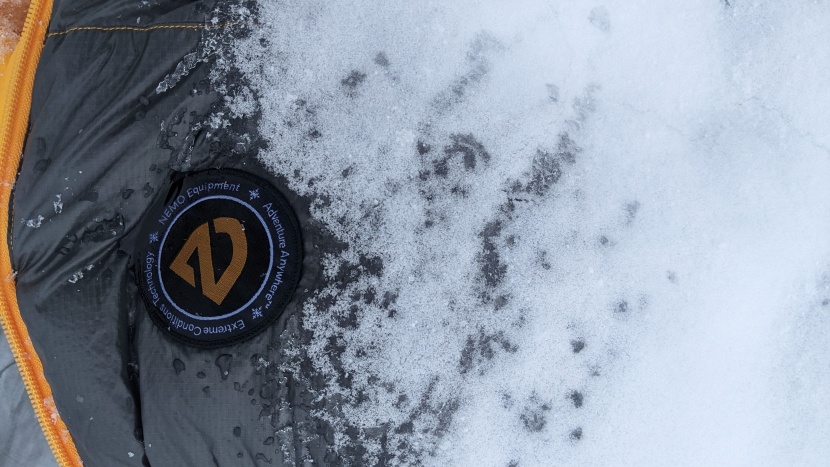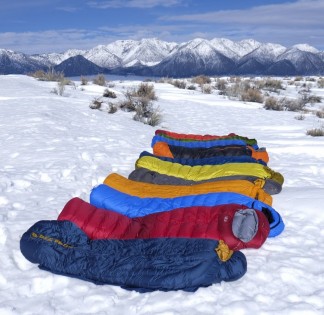Our Verdict
Compare to Similar Products
 This Product
Nemo Sonic -20 | |||||
|---|---|---|---|---|---|
| Awards | Best Bang for the Buck | Best Overall Winter Sleeping Bag | Best Buy for the Front Country | ||
| Price | $660 List $659.95 at Amazon | $875.00 at Amazon Compare at 2 sellers | $819 List $789.00 at Feathered Friends | $239.73 at REI Compare at 2 sellers | $249.99 at Amazon |
Overall Score  |
|||||
| Star Rating | |||||
| Bottom Line | Warm, reliable, and comfortable with innovative features, this is a great winter bag that runs a bit small | This lightweight bag retains warmth even below its temperature rating, and its spacious interior provides superior comfort | Expertly crafted and exceptionally warm, this winter bag offers impressive breathability and compression, but is hindered by a restrictive fit | For those looking for a warm, inexpensive throw bag for car camping, this is an economical option | A well-built but narrow sleeping bag that excels in wet winter conditions, offering impressive weather resistance and decent warmth |
| Rating Categories | Nemo Sonic -20 | Western Mountaineer... | Feathered Friends S... | Marmot Never Summer 0 | Mountain Hardwear L... |
| Warmth (25%) | |||||
| Moisture Management (25%) | |||||
| Comfort (20%) | |||||
| Construction Quality (10%) | |||||
| Weight (10%) | |||||
| Packed Size (10%) | |||||
| Specifications | Nemo Sonic -20 | Western Mountaineer... | Feathered Friends S... | Marmot Never Summer 0 | Mountain Hardwear L... |
| Advertised (Limit) Temperature Rating | -20 F | 0 F | 0 F | 0 F | 0 F |
| Fill Power | 800 | 850 | 900+ | 650 | N/A |
| Type of Down Fill | Hydrophobic PFC-free down | Goose down | Goose down | Down with Down Defender water resistance and reycled synthetic spirafil | Synthetic fill |
| Sizes Available | 5'6" (short), 6' (regular), 6'6" (long) | 6', 6'6", 7' | 6' (regular), 6'6" (long) | 6' (regular), 6'6" (long) | 5'6" (short), 6' (regular), 6'6" (long) |
| Size Tested (Fits Up To) | 6'0" (regular) | 6'0" (regular) | 6'6" (long) | 6'0" (regular) | 6'0" (regular) |
| Measured Weight (Size Regular) | 3.7 lbs | 2.8 lbs | 2.6 lbs (long) | 3.8 lbs | 4.2 lbs |
| Advertised Weight (Size Regular) | 4.06 lbs | 2.75 lbs | 3.14 lbs (long) | 3.93 lbs | 4.13 lbs |
| Advertised Fill Weight (Size Regular) | 2.31 lbs | 1.88 lbs | 1.91 lbs (long) | 1.97 lbs | 3.39 lbs |
| Advertised Shell Weight (Size Regular) | 1.75 lbs | 0.87 lbs | 1.23 lbs (long) | 1.96 lbs | 0.74 lbs |
| Measured Packed Volume (Size Regular) | 16.5 L | 12.7 L | 16.5 L (long) | 14.5 L | 19.3 L |
| Comfort Temperature Rating | No information | No information | No information | 18 F (ISO Tested) | 12 F |
| Extreme or Survival Temperature Rating | -20 F | No information | No information | 5 F (ISO Tested) | -36 F |
| Yes | No | Yes | Yes | No | |
| Measured Length / Fit (Size Regular) | 6.5 ft | 6.8 ft | 7.6 ft (long) | 6.6 ft | 6.6 ft |
| Measured Shoulder Girth (Size Regular) | 65.0 in | 67.0 in | 59.0 in (long) | 56.0 in | 56.5 in |
| Measured Hip Girth (Size Regular) | 60.5 in | 64.0 in | 56.0 in (long) | 52.5 in | 49.0 in |
| Measured Knee Girth (Size Regular) | 49.0 in | 49.5 in | 42.0 in (long) | 42.0 in | 44.0 in |
| Measured Foot Girth (Size Regular) | 44.5 in | 41.0 in | 37.0 in (long) | 39.0 in/45.0 in | 39.0 in |
| Exterior Material | 20D Ripstop DWR, 40D ripstop OSMO footbox with DWR | 20D MicroLite XP | 15D Pertex Shield with 40D ripstop reinforcement, 3-layer Pertex Shield Air Panel | 20D ripstop nylon | 20D polyester ripstop with DWR |
| Weather Resistant Features | DWR coating, waterproof footbox, hydrophobic PFC-free down | Fluorocarbon-free DWR, water-resistant shell | DWR coating, breathable fabric layer | Water resistant down filling. PFC-free DWR | Water-repellent finish |
| Liner Material | 20D taffeta with DWR | water-resistant | Recycled 20D Pertex plain weave | Nylon | 20D nylon |
| Continuous Baffle | No | Yes | Yes | Yes | No |
| Zipper Location | Sleeper's left | Your choice | Sleeper's left | Both sides | Your choice |
| Environmental and Ethical Certifications | Certified Responsible Down Stardard, 100% recycled and bluesign-approved fabrics | Ethically-sourced down, Made in the USA | Made in Seattle with imported materials, Responsible Down Standard, recylced materials | Recycled shell and lining fabrics, PFC-free DWR | None known |
Our Analysis and Test Results
The Sonic -20 combines lofty down, incredible warmth, smart design features, and affordability — a rare feat in extreme cold-weather gear. The zippered vents extend its temperature range in warm weather without leaking heat when you need it. Our testers slept comfortably in this bag in 40°F weather with open zippers. Tester Jacob Holmes tends to be a warm sleeper and reports, “I nearly overheated at 14°F.” Another tester who runs colder reported that she stayed cozy over a weeklong winter trip that dipped down to -10°F.
Warmth
This -20 bag inspires confidence in cold weather, wrapping you in 2.3 pounds of lofty, 800-fill down in a size regular bag. Built to handle a wide range of temperatures, the Sonic kept testers comfortable during field tests that landed between 40°F and -10°F. Back at the lab, we monitored each bag's temperature and relative humidity while lying still for 20 minutes in single-digit temperatures. This bag proved among the warmest we examined. Our testers confirmed this fact during weeklong winter trips in the Maine mountains.
As one of the only -20 bags we've tested, you'd expect the Sonic to outperform zero-degree options. Unfortunately, advertised temperature ratings are more complicated than they should be. The International Organization for Standardization (ISO) sets standards for sleeping bag ratings, but brands choose which temperature to advertise. To make their bags more appealing, they often use the lower safe limit, rather than the lower limit for comfortable sleeping. Many “0-degree” bags only keep users comfortable in the teens. To be on the safe side, it's often a good idea to pick a bag rated 20 degrees colder than your expected conditions.
Of course, if you're a warm sleeper, like tester Jacob Holmes, that may not be the best call. He found he needed to use the vents in this bag to avoid overheating in 6°F temperatures with -11°F wind chill while sleeping in a three-sided lean-to. Other guide friends we spoke with rave about their experiences with this bag, claiming comfortable nights into the negative double digits. Given our experience with the bag, we believe it.
The insulation is thick and substantial, providing a rare security and confidence at this price point. Tester Clark Tate notes, “It kept me comfortable into the single digits, without requiring me to add a supplemental layer like a puffy jacket or fleece blanket.” It's also perfectly comfortable sleeping in the low 20s. In milder conditions, around 40°F, the vents worked wonderfully to reduce sweating while sleeping.
Warmth Features
The face and neck gaskets, which cinch down to 2.5 inches and 2 inches, respectively, add an extra layer of protection without feeling restrictive. The first will keep your head warm while allowing your moisture-laden breath to escape, the second will isolate drafts from the opening from the rest of your body. A down baffle blocks drafts from sneaking through the main zipper, holding warmth where it belongs.
The fitted hood seals warmth and reduces drafts even before you zip up the bag and cinch it around your head. On the other hand, there isn't enough fabric to fully cover your face in harsh conditions, so you'll need to supplement your setup with extra layers. The only time we don't appreciate the warm, snug-fitting hood is in warmer weather. If you're a warm sleeper, it might hold too much heat around your head.
The zippered vents on the top of the bag vent heat without exposing you directly to drafts. They work wonderfully to modulate your temperature through the night, especially if the weather shifts. They kept several testers cool enough to avoid sweating on a few nights, and staying dry is a key step to staying warm.
Moisture Management
Those clever vents, water-resistant fabrics, and hydrophobic down work all together to keep you dry and safe in damp conditions. If you sleep in a tent in the winter, condensation is your enemy. Luckily, the Sonic handles it well. Its fabric is treated with a durable water-repellent (DWR) finish, which helps water roll right off the bag.
To test the DWR, we left puddles of water on the inner and outer fabrics for 10 minutes. At the end of the test, the water simply rolled off the fabric. After a quick swipe with a towel, the fabric held very little moisture, and the down didn't seem affected at all. If water seeps through, the PFC-free hydrophobic (i.e., water-resistant) down treatment should help it retain its insulating properties.
The foot box offers extra moisture protection with Nemo's Osmo fabric, which is recycled, PFA-free, and highly water-repellent. This is especially handy since it's easy to wake up with your feet pressed against a tent wall and all the moisture condensed there overnight.
As mentioned above, the vents on the top layer of the bag can effectively keep you from overheating, which is important since sweat can dampen your base layers and your bag, exposing you to chills down the road. The two-way zipper is a good backup for warmer conditions when you need to maximize airflow.
A cinchable baffle around your neck velcros in place and snugs down to isolate your body from the drafty opening at the hood. It also blocks condensation from your breath from creeping into the main compartment. So, whether you're dealing with condensation in a tent or snow is blowing on your bag in a lean-to, this sleeping bag is built to keep you dry, warm, and comfortable in a variety of extreme conditions.
Comfort
This bag's lofty down, soft fabric, and thoughtful features make it a haven in harsh weather. But, while its unique design makes it a comfortable option for back and side sleepers, it can be an awkward fit if you like to sleep on your stomach. I make it work, but at 5 feet 6 inches, our shorter tester had more room to work with.
Nemo claims the regular size should fit folks up to 6 feet tall, but our 6-foot tester, Jacob Holmes, firmly disagrees. His feet pressed against the end of the bag so tightly that its insulation was compromised, and his feet became occasionally chilled. Even our shorter tester's feet press too tightly against the bottom of the bag at times. If you're worried about it, we recommend sizing up.
The area around your knees also has a narrow cut, making it hard to reach your feet to change clothes or switch out your socks inside the bag. You can do it, but it's a pain.
Despite these sizing issues, our testers loved using this bag in the field. And, although other bags have a roomier cut that makes it easy to adjust your position and layers, that also means more space for cold air to linger, and larger bags tend to take more time to heat up. The tailored cut of this bag means that it warms quickly.
A soft felt flap at the top of the zipper adds another touch of comfort, keeping the cold metal from resting against your face. The main zipper and vents are easy to access and use from inside the bag, making it easy to moderate your temperature through the night.
Construction Quality
With high-quality zippers, well-designed features, and strong reinforcements where it matters most, this is a well-built bag, displaying an impressive attention to detail. Sturdy drawstrings in the hood and collar strap are cleverly routed, staying tucked out of the way while remaining accessible, and working well to secure the bag against cold weather.
The main zipper is metal, with a wedge-shaped plastic guard to minimize snags. A 2-inch ribbon of stiff fabric runs along the zipper, effectively keeping the delicate liner fabric out of the zipper's teeth. Thanks to these thoughtful additions, we rarely jammed the zipper on this bag.
On the other hand, the silky exterior fabric isn't as sturdy as some of the competition. While its stitching is small and precise, it can snag, and stitches pull through slightly under stress. After months of use, I haven't noticed any wear and tear, and other friends have used this bag for years without issue. That said, warm, lightweight sleeping bags are built with lightweight exterior fabric, and it pays to treat them carefully.
When it comes to construction quality, my only real disappointment is the quality of the bag's stuff sack. While it's functional, the thin fabric and straps aren't as sturdy as we'd like. We prefer a higher-quality, waterproof version in the field. This is an oddly common issue among cold-weather sleeping bags.
Weight
The size regular Sonic -20 weighs 3.7 pounds, and Nemo claims it's stuffed with 2.3 pounds of high-quality, 800-fill power down. While 800-fill power down offers an exceptional warmth-to-weight ratio, some other highly rated bags use even lighter and warmer down at 850 or 900+ fill power. And several of the 0°F options we tested are about a pound lighter than the Sonic.
While comparing the Sonic -20 to 0°F sleeping bags may seem like an apples-to-oranges comparison, in our temperature tests, several of the 0°F bags kept us nearly as warm as the Sonic. This suggests that they offer a better warmth-to-weight ratio overall. That said, the 0°F bags we tested weigh between 2.5 and 4 pounds, making the Sonic -20's 3.7-pound weight impressively competitive given its lower temperature rating and strong performance.
Where the Sonic stands out is its warmth-to-cost ratio. While we all want warm, light, and affordable gear, you usually have to choose two out of the three. This bag is warm and relatively inexpensive. For winter backpacking or mountaineering, this bag's balance of warmth, weather resistance, and reasonable packability makes it a solid choice.
Packed Size
When packed, the Sonic -20 compresses to 16.5 liters, which is about average for our test group. Given that most of the bags we tested are only rated to 0°F, that's an impressive feat.
The key trade-off here is between warmth and compressibility. Theoretically, a -20°F bag should require more insulation than a 0°F bag, which will likely take up more space in your pack. However, innovative fabrics can interrupt this pattern, and high-quality down fill is more compressible than lower-quality down.
The 800-fill power down in the Sonic is more compressible than the lower-quality 650-fill power feathers used in other bags, for example. So, while it may take up a bit more room in your pack than 0°F bags, it's within reason for the bag's warmth rating. And when the temperatures drop into the negative double digits, you'll be happy to have the extra protection. At this price point, the Sonic -20 offers an impressive warmth-to-packed-size ratio.
Should You Buy the Nemo Sonic -20?
The Sonic -20 is an incredible value for a cold-weather sleeping bag, offering exceptional warmth and thoughtful features at a surprisingly reasonable price point. The smart vents increase versatility, allowing you to extend the bag's use into the shoulder seasons. That's why it's the first sleeping bag our tester, Clark Tate, mentions when friends ask her about winter camping gear: “I trust it in the backcountry in temperatures that drop into the negative double digits, and its water-resistant shell and hydrophobic down inspire confidence in damp conditions.”
It's also comfortable for back and side sleepers. Stomach sleepers may find a few other bags more comfortable in this position, but may still prefer the Sonic -20 over other options for all its other impressive qualities. It is trickier to size, though. Consider sizing up for a better fit if you are approaching 6 feet tall. While it's not the lightest or most compressible bag we've tested, I never hesitate to carry the extra pound to feel confident that my bag has my back.
The Nemo Sonic -20 is a fantastic choice for serious winter adventurers who need reliable warmth in extremely cold weather. It delivers great value, high-end insulation, and well-designed features. However, taller campers, ultralight backpackers, and those who don't camp in extreme temperatures may want to consider other options.
What Other Cold Weather Sleeping Bags Should You Consider?
The Western Mountaineering Kodiak MF may be rated for 0°F, but we've used it comfortably down to -10°F with the addition of a lightweight down blanket. Its roomy cut is far more comfortable for larger humans than the Sonic, but the Kodiak MF is also far more expensive. Another expensive-yet-worth-the-price bag we love is the warm and compressible Feathered Friends Snowbunting sleeping bag. While toasty, breathable, and exceedingly plush and comfortable, the Snowbunting's narrow cut makes for a more restrictive rest. The Marmot Lithium and Marmot Never Summer 0 are both less expensive, but they didn't keep us warm enough to inspire confidence on backcountry adventures. We like to use them within striking distance of a car in case the weather takes a turn for the worse.


